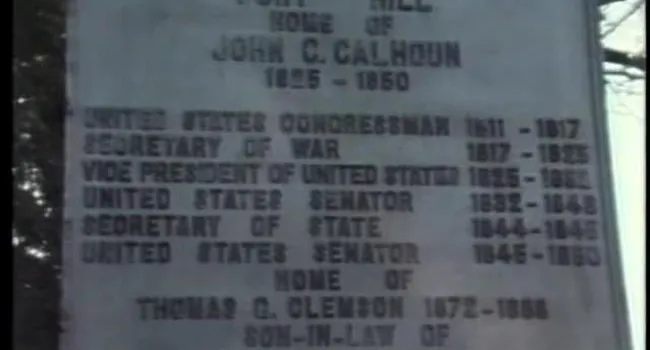The lesson begins at the Wilson Tennis Ball factory in Fountain Inn. Here we see a montage in the process of making tennis balls The host then mentions that there are many other products made in the state. Another montage follows showing a sampling of some of them. Included are Helms sailboats; Glassmaster motorboats; Shakespeare fiberglass fishing rods; Life jackets from the Gladding Corporation; Golf balls and clubs from Dunlop Sports; Russell Stover candies; Ridgeland guitars; Home-lite chain saws; Sunbeam lawn-mowers and grass sprinklers, Looney-Tunes toothpaste, Schmidt Products, and Stanley screwdrivers.
Next is a montage of a large plant in Berkeley County--the Alumax Corporation. It is an example of an industry that has moved a part of its operation to South Carolina. It produces aluminum ingots. The second portion of this montage shows a local manufacturer -- The Loxcreen company of Cayce. This South Carolina company has grown and established plants in various parts of the country. In the montage we see Loxcreen producing storm doors.
A dramatic scene follows with William Gregg discussing the virtues of a diversified economy in South Carolina with friends of his. Then he happens upon a young man playing hooky at a pond near the Graniteville mill. This location is the site of the original dam of the Graniteville Company. They talk about life in Graniteville and the changes that the new industry has made in their lives.
Standards
- 5.1.CX Contextualize how the Second Industrial Revolution led to an increased desire for raw materials and the United States involvement in imperialistic efforts and economic expansion.
- 5.1.E Analyze multiple perspectives on the economic, political, and social effects of western expansion, the Industrial Revolution, and immigration through primary and secondary sources, and evaluate the subsequent changes to the U.S.
- 8.4.CX Evaluate South Carolinians’ struggle to create an understanding of their post-Civil War position within the state, the country, and the world.
- This indicator was developed to encourage inquiry into how the former planter class, African Americans, women, and others adjusted to, gained, lost, and/or regained position and status during Reconstruction. This indicator was also written to foster inquiry into how South Carolina worked with a stronger federal government and expanding international markets.
- 8.4.P Summarize the economic changes that emerged in South Carolina and the U.S.
Resources
You need to be logged in to listen to view this content. Create an account now; it's quick, easy, and free!
Log In to View









































